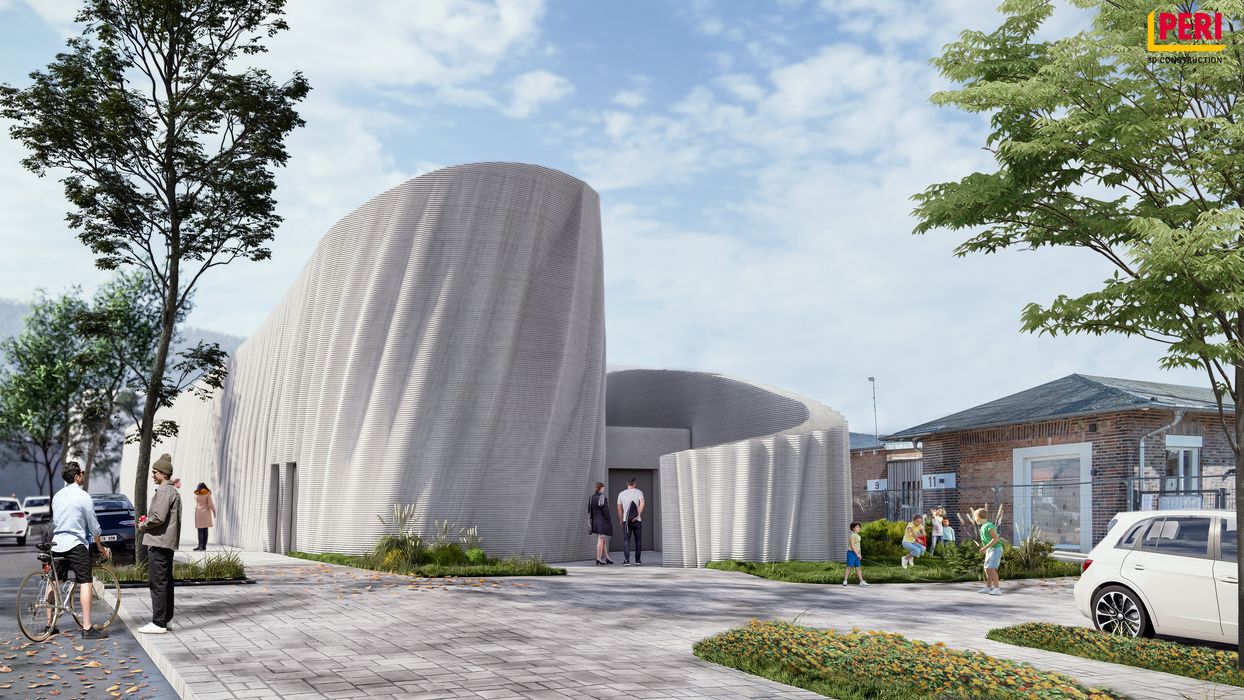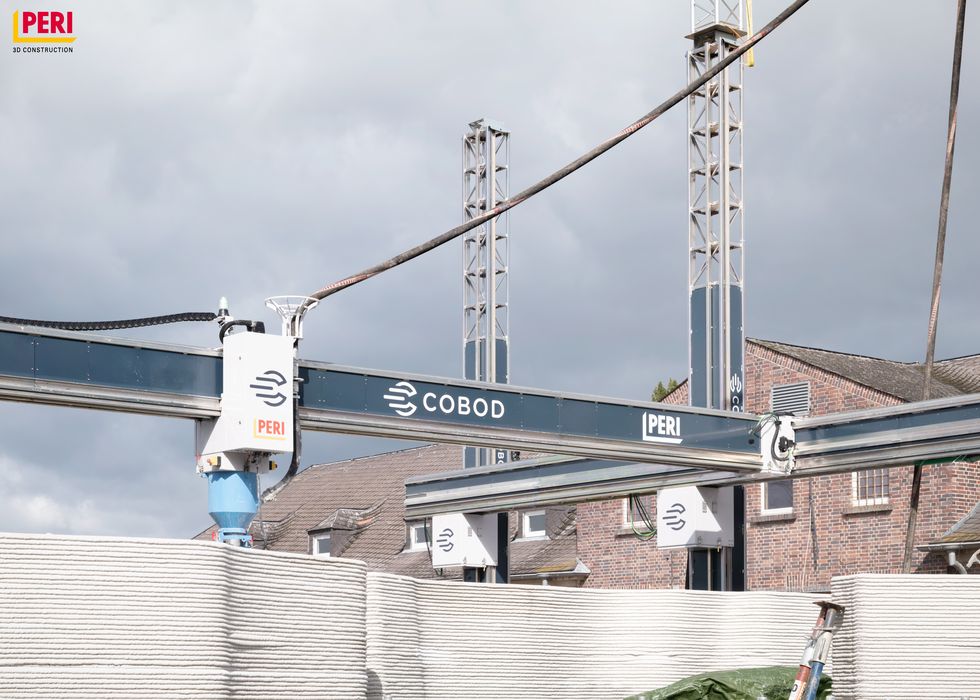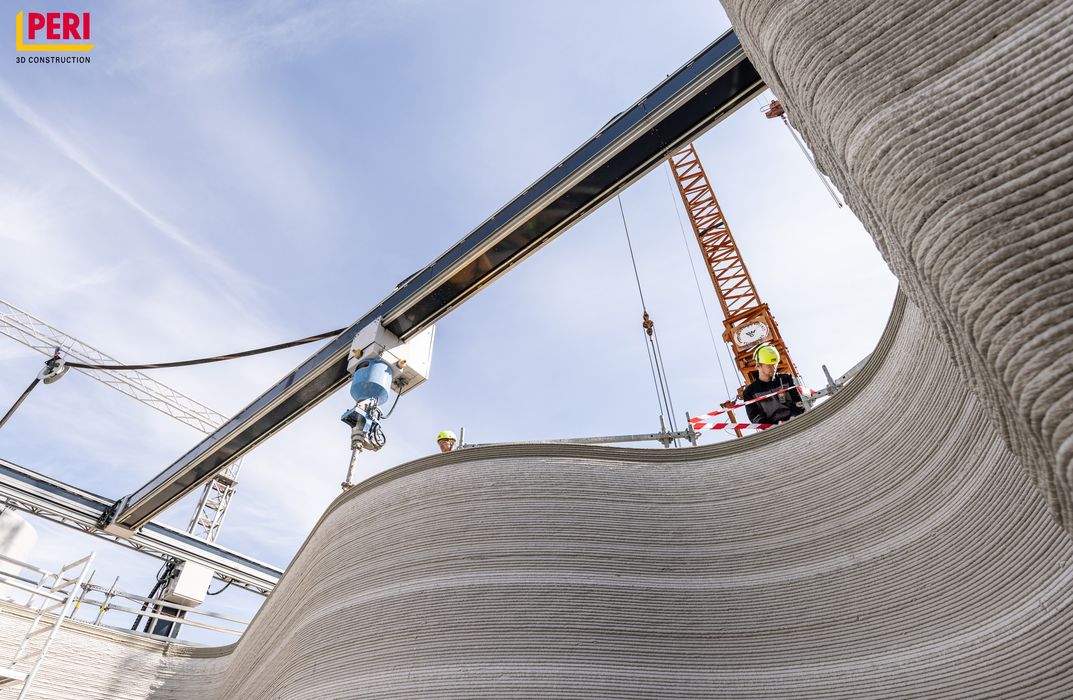
Denmark-based COBOD, has announced a rather large 3D printed building project.
Known for producing the colossal BOD2 construction 3D printer, COBOD’s technology extrudes concrete in layers to create large structures. Their innovative approach involves a moving print head on a gantry arrangement that surrounds the build site.
Partnering with PERI for a Groundbreaking Project
COBOD collaborates with local and regional construction firms to deploy and use their advanced construction 3D printer equipment. The new project is being executed by international construction firm PERI, which also happens to be a major investor in COBOD. The building site is located in Heidelberg, Germany, where the structure will serve Heidelberg IT Management GmbH & Co. KG as an IT server site.
Europe’s Largest 3D Printed Building

What’s notable about this structure is its sheer size: at 54m long, 11m wide, and 9m tall, the building, once complete, will be the largest 3D printed building in Europe. It’s expected to be completed this summer.
While the completion date for the building is months away, the actual 3D printing portion of the project will be done quite quickly. PERI believes the printing will take only 140 hours to complete. This is because only the concrete portions are 3D printed; the remainder of the structure is built using traditional trades, and takes the traditional time to do so.
Design Freedom in 3D Printed Construction

Even though only 140 hours are required to print the concrete structure, the technology allows considerable design freedom. This enables the project architects to achieve a unique building geometry that would be difficult to make using traditional approaches — and certainly not in the same 140 hours.
The key implication of this project is its size: there have been many 3D printed buildings made over the past several years, but most have been rather small. A typical example would be a demonstration hut or a 600 sq ft one-room house.
This year, we’re beginning to see much larger structures 3D printed in concrete. This particular project is notable due to its highly creative design, which fully leverages the design freedom provided by the technology.
We’re hoping to see many more large 3D printed construction projects underway in the near future.
Via COBOD
